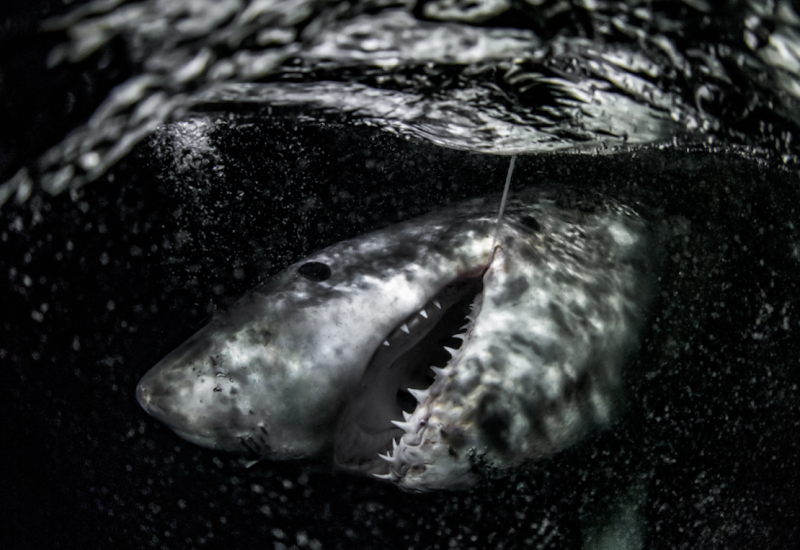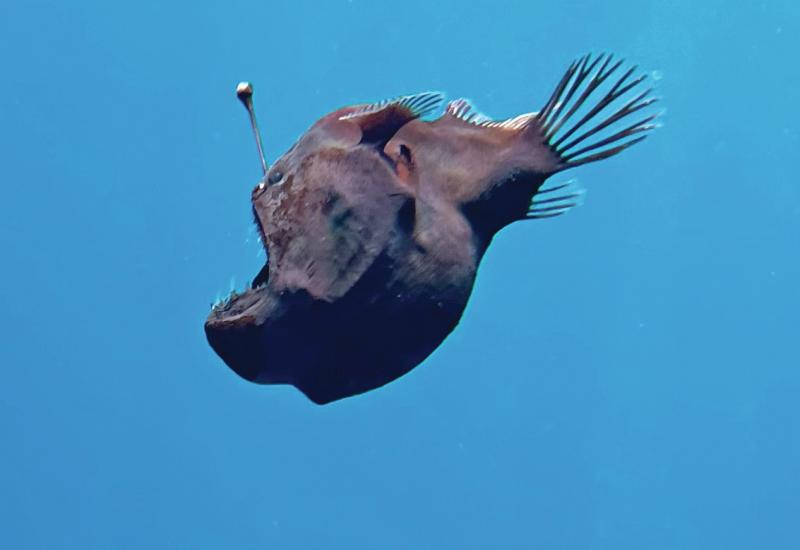Photo Tips: What the Muck is Muck Diving?

Alex MustardMuck Diving: Yawning Hairy Frogfish
CAMERA: Nikon D7100, Subal housing LENS: Tokina 10-17mm @ 12mm STROBES: 2 Inon Z240 SETTINGS: f/14, 1/100 sec, ISO 250 LOCATION: Dumaguete, Negros, PhilippinesA dive guide and photographer approach a yawning hairy frogfish disguised on the seabed.

Alex MustardMuck Diving: Delightful Octopus
CAMERA: Nikon D4, Subal housing LENS: Nikon 60mm STROBES: 2 Inon Z240 SETTINGS: f/10, 1/200 sec, ISO 400 LOCATION: Lembeh Strait, Sulawesi, IndonesiaAn octopus attempts to camouflage itself along the mucky ocean floor.

Alex MustardMuck Diving: Shy Nudibranch
CAMERA: Nikon D7100, Subal housing LENS: Nikon 60mm STROBES: 2 Inon Z240 SETTINGS: f/20, 1/250 sec, ISO 125 LOCATION: Tulamben, Bali, IndonesiaA nudibranch crawls lazily along the muck.
A featureless sandy seabed and limited visibility don’t seem like an ideal recipe for great underwater photos. Yet, over the past 20 years, muck diving has become one of the most popular choices for underwater photographers. It’s not the scenery that draws us, but the super abundance of subjects. Everywhere the guide points his stick there are weird and wonderful creatures, most of which stay stock-still posing, displaying their outrageous adaptations for survival. I’ve seen photographers come out of the water laughing; it’s the only emotion that computes when faced with such an embarrassment of photographic riches.
The downside of so many subjects is that they often turn underwater photographers into stamp collectors. They come back with hundreds of images, but most are simply record-style shots of different critters. Time and again, photographers don’t realize they’ve done this until they’re home. It is a hard trap to avoid when dives are focused on finding as many critters as possible, and there’s always the temptation of another great subject. The resorts even encourage you to construct critter wish lists, but remember — you don’t have to shoot everything you see. When you find a perfectly positioned subject, work the opportunity. The photographer’s goal is not to produce thousands of images as memories of what was seen, but to produce a few really memorable images.
Don’t Muck It Up
Creating stunning images on muck dives starts with proper muck-diving skills. A careless diver will stir up soft sediments, filling everyone’s photos with backscatter. Face down, fins up is the way to dive on muck. This keeps your nose close to the ground for spotting and your fins clear of the sand. Many muck divers use a metal pointer, or “muck stick,” to enable them to settle on the sand, hold position and take off with minimum disturbance. Pay attention to the direction of the current and approach upstream.
Experienced muck divers tend to stick to their guides like glue, as the easiest place to find a mimic octopus, hairy frogfish or ornate ghost pipefish is right at the end of your guide’s pointer. Dive well and do what you are told. Remember, the less a guide has to look after you, the more time he will have to spot and show you critters. It is also important to share subjects evenly, so make sure other photographers and non-photographers get an equal look.
Avoid the Ugly Muck
Black sand is rarely pure obsidian; instead it is flecked with grains, shells and pebbles of every color. In short, it’s a messy, distracting background, so the photographic challenge becomes hiding the muck.
The good news is there are lots of solutions.
The simplest method is to search for a critter sitting up, away from the seabed, or crawling over a rock, like the nudibranch allowing itself to be framed against a clean background. The lower you’re able to get the camera, the better the background becomes. Many critters live on other critters. Crabs and, particularly, shrimp make their homes on all sorts of other invertebrates. These often make excellent backgrounds when you can completely fill the frame with the host creature.
Most of the muck stars, however, live on the sand and rarely pose for the camera, so you must get creative to control your backgrounds. Consider opening up the aperture to throw the background further out of focus; you can also de-emphasize the distracting sand with your lighting. Techniques like inward lighting, where the strobes are aimed to light just the subject, and snooted strobes, where the beam of the strobes are restricted to illuminate only the critter, are both very effective. A final strategy is to use a wide-angle lens very close to the subject, which will make individual distractions in the background insignificant.
Get Closer
Muck dives often have low visibility and suit very close-focus techniques. Shorter-focal-length macro lenses, like the 60mm I used here, are often preferable because you don’t have to back off and shoot through too much water. I used a longer-focal-length macro lens, like the 105mm, mainly in conjunction with wet diopters, which allowed me to focus closer. I also shoot muck dives with close-focusing wide-angle lenses, although only when there are larger subjects like frogfish around, which I know will allow me to get super close.










